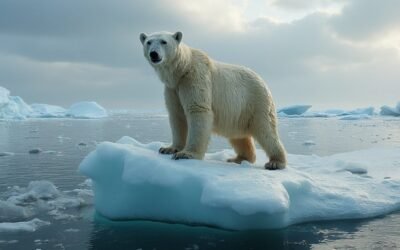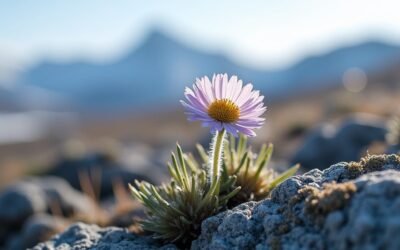Reindeer populations in Arctic regions have declined by 56% over the past two decades. Key drivers include climate change, diseases, predation, and human activities. Climate change, in particular, disrupts habitats and foraging conditions, affecting reindeer survival. Importantly, the Porcupine herd remains stable, while several Canadian and Russian herds are classified as threatened or endangered. These declines impact indigenous communities, which rely on reindeer for food security and cultural practices. Conservation efforts focus on habitat protection, sustainable hunting, and disease control. Understanding these dynamics is vital for addressing the species' challenges and preserving ecological and cultural balance in the Arctic.
Main Points
- Reindeer and caribou populations have decreased by 56% over the past two decades.
- Climate change disrupts habitats and food availability, significantly impacting reindeer survival.
- Predation, diseases, and parasites contribute heavily to the declining populations.
- Stable populations include the Porcupine herd, while many others are classified as Threatened or Endangered.
- Indigenous communities face food security challenges due to declining reindeer numbers.
Decline in Reindeer Populations
Reindeer and caribou populations in the Arctic and Subarctic have experienced a significant decline of 56% over the past two decades, dropping from 4.7 million to 2.1 million individuals. This alarming decrease in reindeer population dynamics has been attributed to a range of factors, prominently including climate change. The changing climate in Arctic regions has led to alterations in habitat and foraging conditions, exacerbating the threats faced by these species.
Parasites and diseases have also played an essential role in their decline, weakening the herds and reducing their ability to thrive. Predation and overhunting further compound the challenges to reindeer survival. The reduction in foraging availability, driven by climate change, is particularly detrimental, as it directly impacts the food security of indigenous communities that rely on these herds for their sustenance.
In response to these multifaceted threats, various conservation efforts are being implemented to stabilize and hopefully reverse the decline. These efforts include habitat protection, better management of hunting practices, and research into disease and parasite control. Addressing the decline in reindeer populations is indispensable not only for the species' survival but also for the well-being of the indigenous communities that depend on them.
Affected Reindeer Herds
Populations of several key reindeer herds across the Arctic, including the Porcupine herd in Alaska and Canada and Russia's Lena-Olenyk herd, present a diverse picture of health and decline. These herds are notable exceptions, with the Porcupine herd near its historic highs, offering a rare instance of stability among Arctic reindeer populations. In stark contrast, the situation for other herds is far less optimistic.
In Canada, nine herds of barren-ground caribou have experienced significant declines, leading to their classification as Threatened on a national level. Additionally, two herds of Eastern Migratory Caribou are now considered Endangered, reflecting the broader challenges faced by reindeer populations across the Canadian tundra.
Russia's situation is similarly troubling, with 18 out of 19 assessed herds classified as rare, decreasing, or Threatened. The Lena-Olenyk herd, last counted in 2009, lacks current population estimates, creating uncertainty about its status. The effects of climate change are compounding these challenges, as shifting weather patterns and habitat changes in the Arctic tundra continue to impact reindeer and caribou populations. Overall, the current state of Arctic reindeer herds underscores the urgent need for effective conservation efforts.
Causes of Decline
A multitude of factors, including parasites, diseases, predation, hunting, and decreasing foraging availability, contribute to the decline of reindeer and caribou herds across the Arctic. One of the most significant contributors to these population declines is climate change. The warming of the Arctic tundra disrupts food abundance by altering plant communities, which are vital for reindeer populations. This shift in vegetation affects the availability and nutritional quality of forage.
Additionally, rising temperatures lead to increased heat stress among reindeer, making them more vulnerable to diseases and parasites. The warming climate also extends the active season of insects, resulting in heightened insect harassment, further stressing the animals. These combined stressors weaken the ungulate populations, exacerbating their decline.
Furthermore, climate change influences the distribution and density of predators, amplifying predation pressures. Hunting practices, coupled with reduced food availability, compound the challenges faced by reindeer. The intricate interplay of these factors makes it difficult for scientists to isolate specific causes of population declines. However, the overarching impact of climate change remains evident, posing a significant threat to the sustainability of reindeer populations in the Arctic.
Impact on Indigenous Communities
How does the decline of reindeer and caribou herds affect the food security and cultural practices of indigenous communities in the Arctic? The dwindling populations of reindeer and caribou directly threaten the food security of these communities, which rely heavily on these animals for sustenance. As primary foragers within the Arctic food web, reindeer and caribou are integral to maintaining food abundance for indigenous peoples.
Climate change exacerbates these declines, disrupting the delicate balance of the Arctic ecosystem. Reindeer herds and caribou populations help cycle nutrients from plants back into the soil, ensuring the health of the ecosystem. A reduction in their numbers can lead to less fertile soil, affecting plant growth and, consequently, the availability of food sources for other species.
Moreover, the abundance of reindeer and caribou significantly influences predator populations. A decline in these herds may lead predators to shift their focus to other prey, potentially destabilizing the local food web and further impacting indigenous communities.
Conservation Efforts
Addressing the decline of reindeer and caribou herds demands strong conservation efforts to safeguard both the species and the cultural practices of indigenous communities. Conservation strategies must prioritize mitigating the impacts of climate change, which greatly affects the population growth rates and essential rates of Arctic ungulates. The increasing frequency and severity of climate events disrupt tundra vegetation, reducing the abundance of reindeer and leading to potential population crashes.
Collaboration among scientists, wildlife management agencies, and indigenous communities is necessary to develop and implement effective conservation measures. This multi-faceted approach ensures that the cumulative knowledge and expertise of all stakeholders are utilized to address the complex challenges facing caribou herds. Monitoring and data collection, as provided by the Arctic Report Card, are vital for tracking the status of these herds and informing adaptive management strategies.
Proactive efforts should also consider the long-term impacts of climate warming, which worsens habitat degradation and alters the ecological balance. By focusing on sustainable practices and addressing factors like diseases and regulated hunting, conservation initiatives can stabilize the populations of reindeer and caribou, thereby preserving both the species and the cultural heritage of the Arctic regions.
Conclusion
The decline in reindeer populations in Arctic regions has varied causes, including climate change, industrial development, and habitat loss. This decline profoundly impacts indigenous communities that depend on reindeer for cultural and subsistence purposes. Affected herds demonstrate the urgent need for thorough conservation efforts. Ensuring the sustainability of reindeer populations requires a coordinated approach involving environmental protection, policy changes, and collaboration with indigenous groups to mitigate the adverse effects and promote long-term ecological balance.


